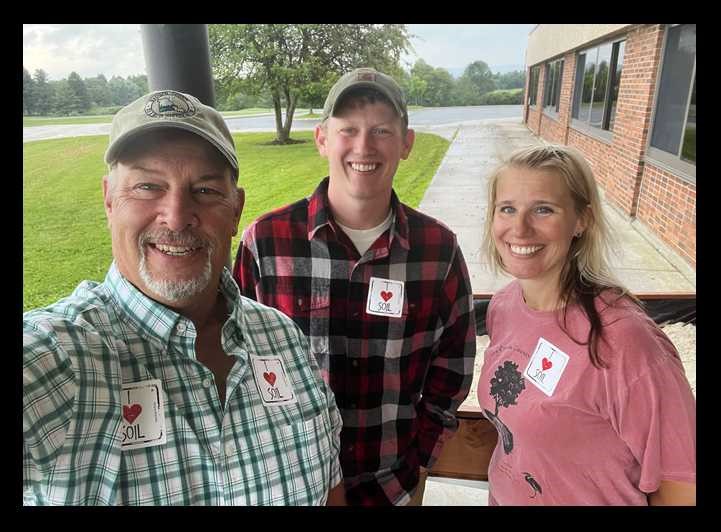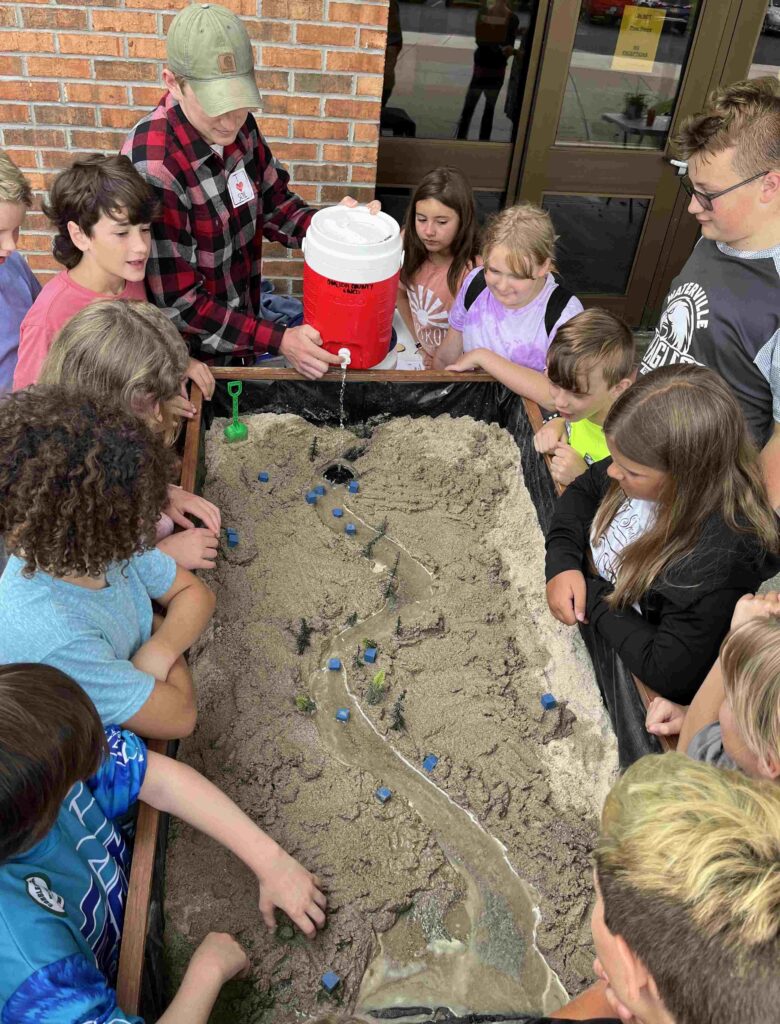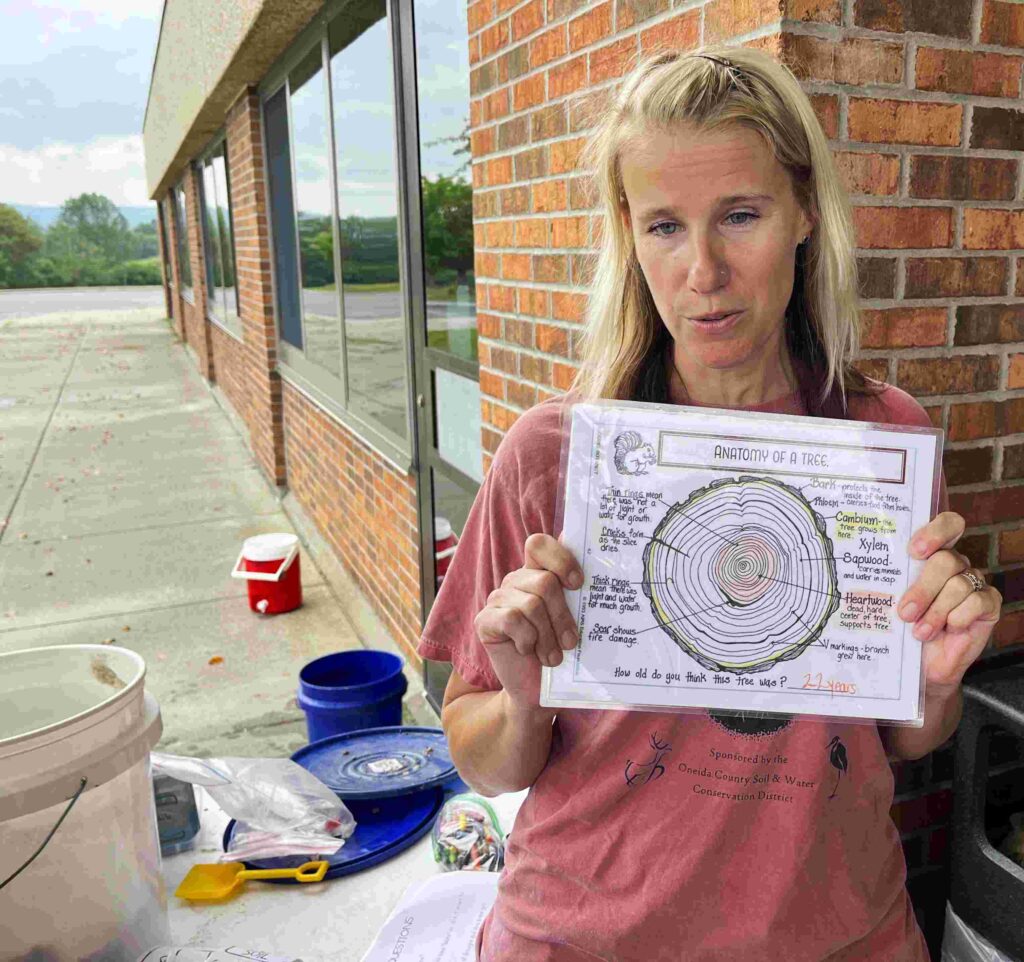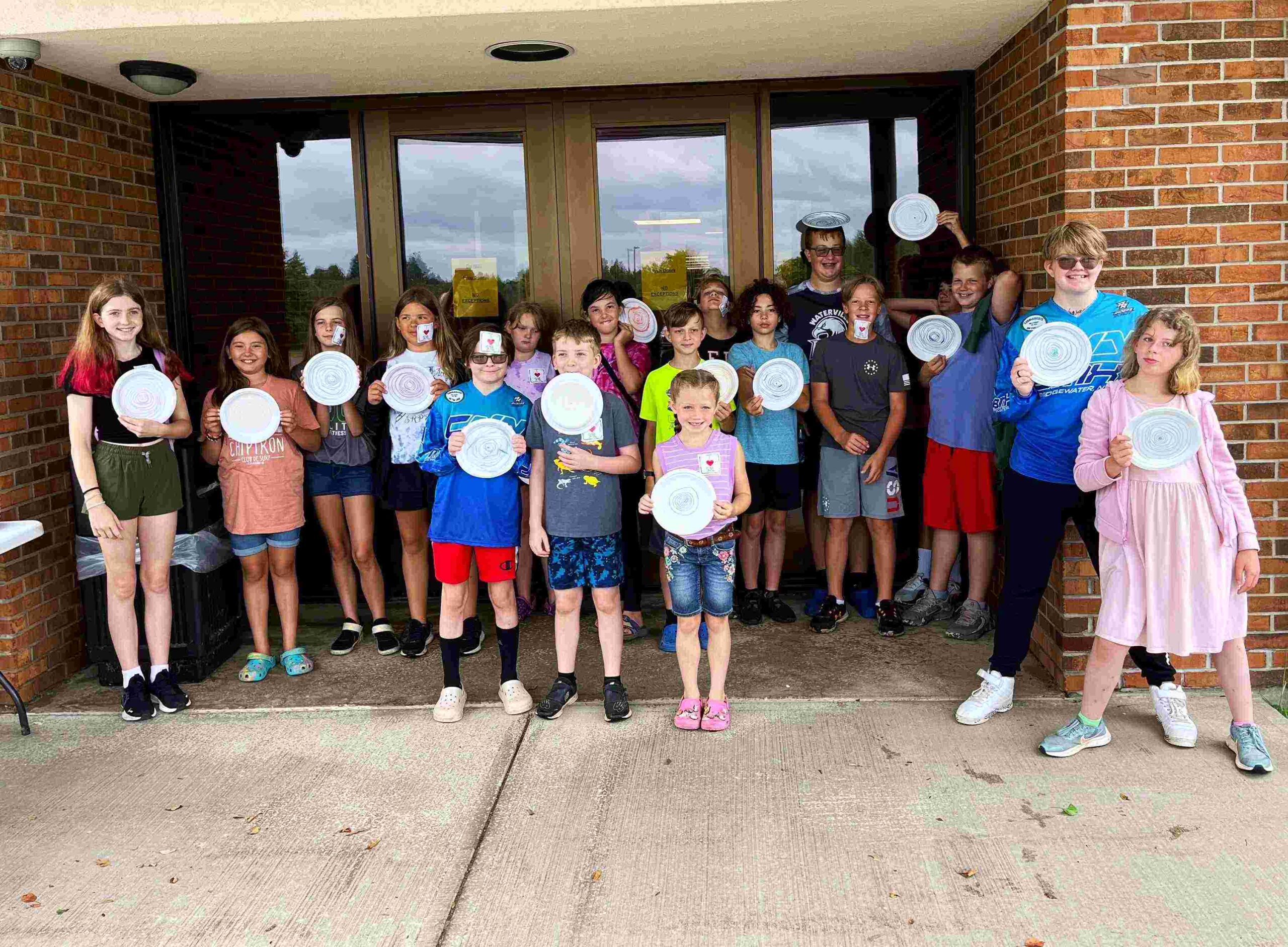
Waterville, N.Y. —- Ben Franklin said, “Tell me and I forget, teach me and I may remember, involve me and I learn”. Involvement with natural systems is a hallmark of folks working in local conservation efforts. And so is sharing hands-on learning with the next generation of conservationists. Education is as close as one’s eyes, hands and heart.
In an effort to give Waterville students a glimpse of career pathways in the environmental field, the Oneida and Madison County Soil and Water Conservation Districts partnered with teachers and 6th and 7th graders to show some specific examples of basic conservation husbandry practices. “It all starts with the soil and keeping it healthy and covered with living roots”, said Madison County SWCD Grazing Specialist, Farmer and Waterville Alumnus, Troy Bishopp.

His tabletop demonstration had students pouring water into a rain simulator over bare and sod-covered soil to see the effects of erosion potential, water holding capacity and resiliency opportunities for a whole watershed. “The raindrop can be destructive if not intercepted by a leaf parachute”. Students saw first hand, the popular “Slake Test” as they dropped chunks of soil on a screen immersed in a water column and witnessed how the presence of organic matter (water holding capacity) contributed to the soil’s structural integrity.
Bishopp described how the biological processes such as earthworm activity, root growth and sticky exudates from fungi and bacteria all contribute to soil aggregation and the stability of macropores which allow better infiltration of water into the soil, reducing water runoff and erosion. In practice, he works with farmers to manage pasture systems, plant cover crops, improve nutrient cycling and install riparian forested buffers, grassed waterways and contour farming practices.
Students transitioned to the popular “Stream Table” where Oneida County SWCD Water Quality Specialist, Payton Reese and District Forester, Jessica Pyrda taught what a watershed is and how a stream naturally wants to flow through a landscape and its floodplains. Students then placed houses and debris along the watercourse mimicking realistic scenarios while the conservation professionals released the water to show students how the velocity affects streambank erosion and how it changes a community.

As the two recited the 3 s’s of stormwater management: “Soak it in, spread it out, and slow it down”, they inspired students to keep banks covered and trees in place, maintain natural flood zones, break up impervious surfaces with water catchment practices and consider not building near streams. Their careers surround working with residents, agriculture, watershed groups and municipalities on a variety of watershed planning tools, monitoring, designing systems and installation of resilient practices to mitigate weather events.
Jessica introduced her “tree cookies” and described the many jobs within the forestry context. She had the students count tree rings and relate it back to their own growth. She passed around local tree species and their importance within a watershed. Students then exercised making their own growth rings from a paper plate and showcased their artful creations.
The pursuit and partnership of knowledge and hands-on learning was enhanced after the program by an ice-cream social donated by Waterville’s Stewart’s Shops. Education never tasted so good!
Published in Country Folks


 Choosing to Farm Podcast Guest
Choosing to Farm Podcast Guest »
»